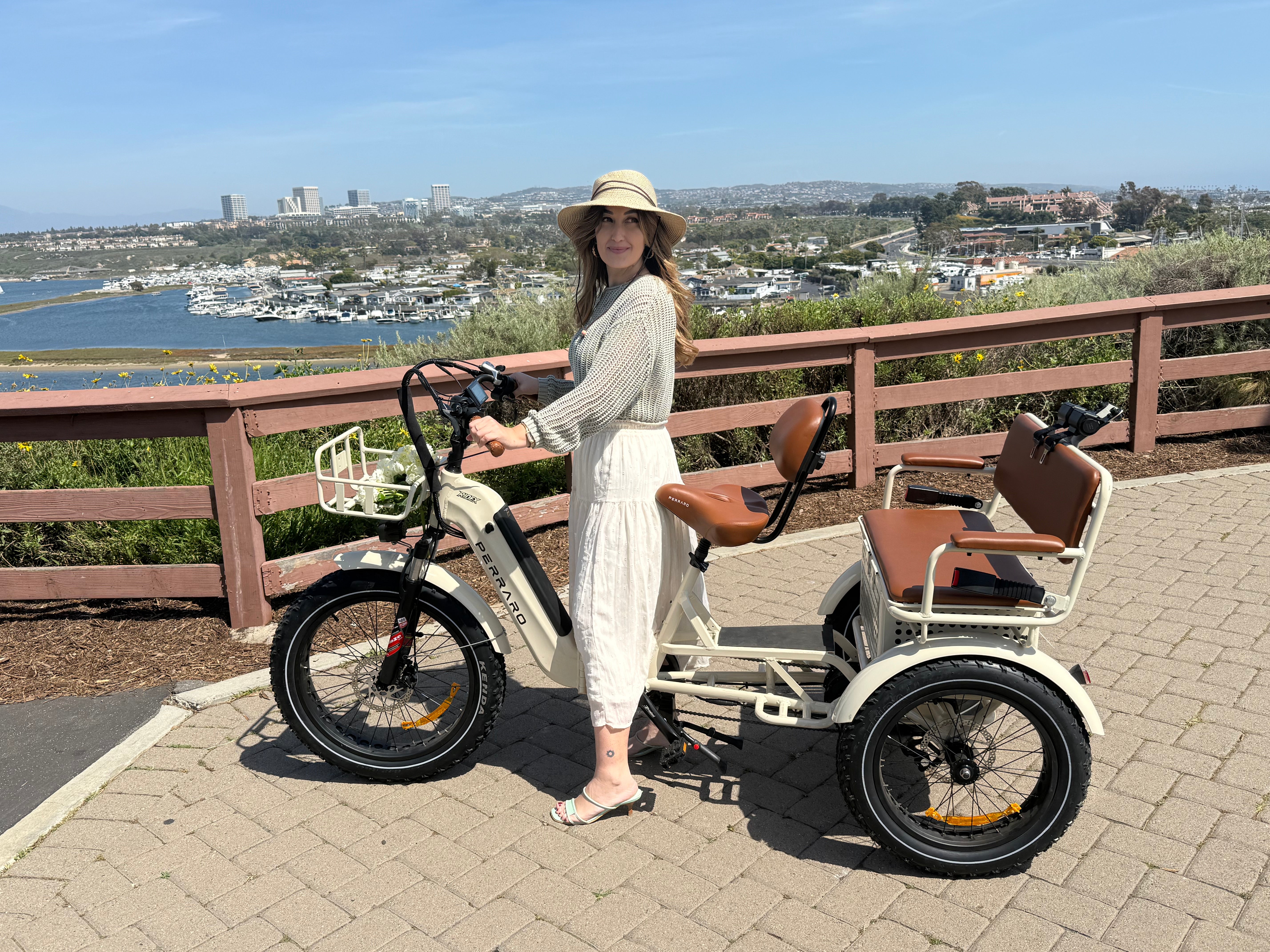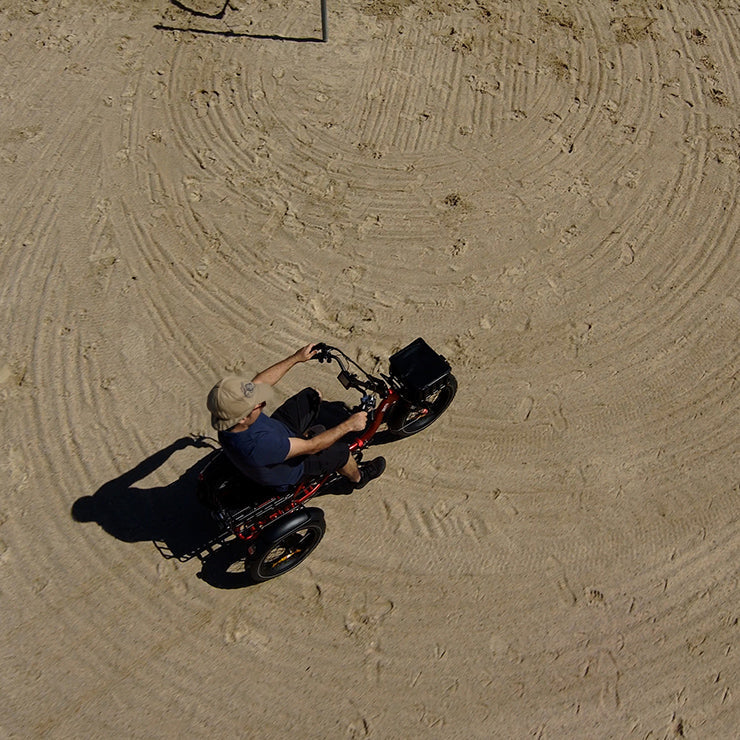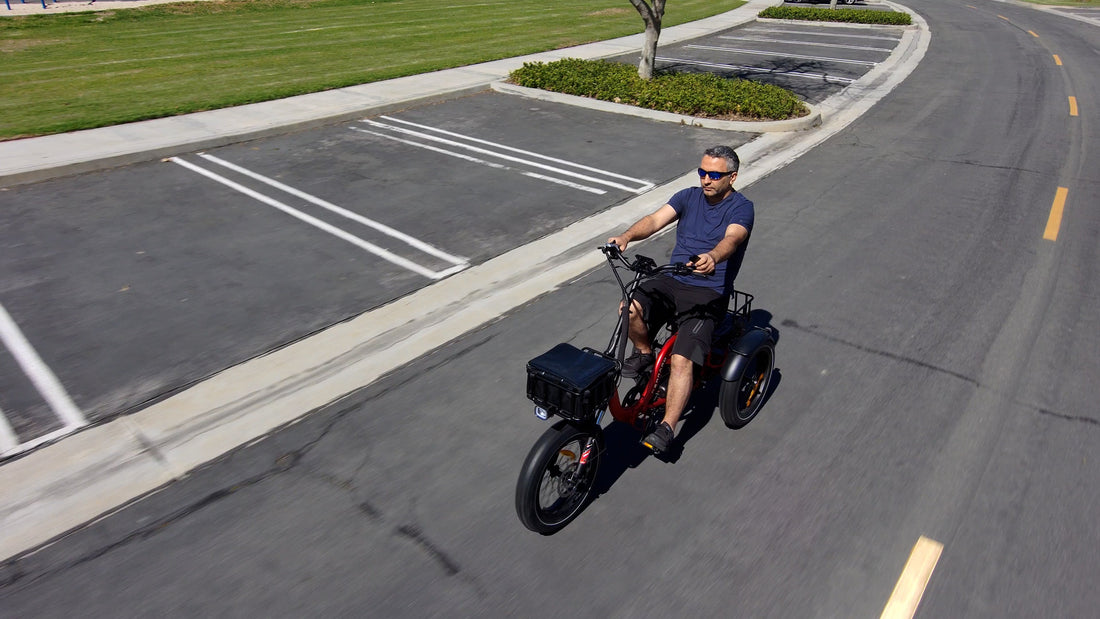With sustainability a worldwide imperative, the demand for cleaner modes of transport has grown exponentially. Amongst the most innovative and fastest-growing is the electric trike.
It is a three-wheeled electric bicycle renowned for its stability, ease, and fuel economy. But beneath hype and trendy designs, the one essential question still lingers: How eco-friendly are electric trikes when viewed through the lens of the circular economy?
What Is a Circular Economy?
Let's define the circular economy briefly before discussing electric trikes. Unlike the traditional linear approach (take, make, dispose), the circular economy is a closed system in which products and materials are reused, refurbished, repaired, and recycled to extend their lifecycle and minimize environmental impact.
The principles of the circular economy are:
- Designing waste and pollution out
- Keeping products and materials in use
- Restoring natural systems
The Eco-Friendly Advantages of Electric Trikes
Electric trikes possess a number of benefits that make them a cleaner way of traveling compared to cars, motorbikes, and even a few e-bikes. Here's why:
1. Lower Carbon Emissions
Electric trikes produce no tailpipe emissions. This is a significant step towards lessening greenhouse gas emissions, especially in urban areas where air quality is a major concern.
Although electricity generation still relies on fossil fuels, the total carbon footprint of electric trikes is considerably less than that of other modes of transport.
2. Energy Efficiency
Electric trikes are, by default, more energy efficient than four-wheeled electric vehicles. They use less energy to transport because they are lighter and possess a small battery. Thus, they are perfect for short distances, last-mile delivery, and personal transportation.
3. Less Urban Congestion
Electric trikes have a smaller footprint, which helps minimize traffic. Their three-wheeled design also increases accessibility among individuals with mobility or balance problems, providing a more accessible mode of transportation.
4. Reduced Noise Pollution
Electric motors produce less noise compared to gasoline engines. Through their part in reducing noise on roads, electric trikes bring more vibrancy to cities in dense city settings.
Are Electric Trikes Really Circular?
Although electric trikes possess strong sustainability benefits, actual eco-friendliness in the circular economy approach relies on a number of factors:
1. Battery Life and Recycling
The most environmentally demanding part of an electric trike is the lithium-ion battery. Lithium-ion batteries have short life cycles, usually 3–7 years, depending on usage and maintenance.
At the end of life, improper disposal can cause destructive environmental harm through toxic chemical leakage.
However, more manufacturers and recyclers are using and recycling batteries. They are developing uses for second-life batteries or recovering valuable materials like nickel, cobalt, and lithium through innovative recycling techniques.
Buying electric trikes that have swappable or recyclable batteries can contribute to enhanced circular economy compatibility.
2. Repairability and Longevity
Circular economy products are best designed to be durable, repairable, and upgradeable in a modular fashion. Some electric trike designs already support this, so one can replace individual components (motors, brakes, tires) without needing to dispose of the whole bike.
But electric trikes are not all equal. Cheaper or lower-quality ones will break quicker and have diminished repair support, generating electronic waste. The buyer should look for companies that provide repair, replacement parts, and warranties, essential to making products last longer.
3. Material Use and Manufacturing Practices
Circular product design depends on sustainable material sourcing. Electric trikes constructed from recycled metals, aluminium, or biodegradable plastic perform better in circular testing.
Improved and energy-efficient production is also essential. Some companies promise low-emission manufacturing and sustainably sourced materials, but others still follow outdated, resource-intensive practices.
4. End-of-Life Management
A genuinely circular electric trike must have a transparent end-of-life strategy. Vehicles must not be sent to landfills through manufacturers' take-back schemes, recycling agreements, or second-hand resale platforms.
Encouragement of firms that have product stewardship initiatives ensures electric trikes are recycled and reused in an environmentally friendly manner.
How to Choose an Eco-Friendly Electric Trike?
If you are thinking about purchasing an electric trike and wish to remain true to the circular economy values, the following tips can be useful:
- Look for companies focusing on sustainability and providing open data on battery sourcing, recycling, and repair facilities.
- Select long-lasting designs with modular parts that may be upgraded or replaced.
- Whenever possible, consider buying remanufactured or refurbished electric trikes.
- Look for manufacturers with battery recycling or trade-in schemes.
- Take the option to purchase second-hand through reputable dealerships or sites to give existing products a longer life.
Conclusion
Electric trikes are a much greener choice than older petrol-powered vehicles. They produce fewer emissions, less noise pollution, and lower city congestion—all aligning with the aspirations of the circular economy.
However, how eco-friendly electric trikes are is also determined by how they're made, used, and thrown away. With clever buying, responsible use, and better industry practice in recycling batteries and fixability, electric trikes can be a key part of a circular, sustainable future.
In short, electric trikes can be eco-friendly. But only if we drive them responsibly.





